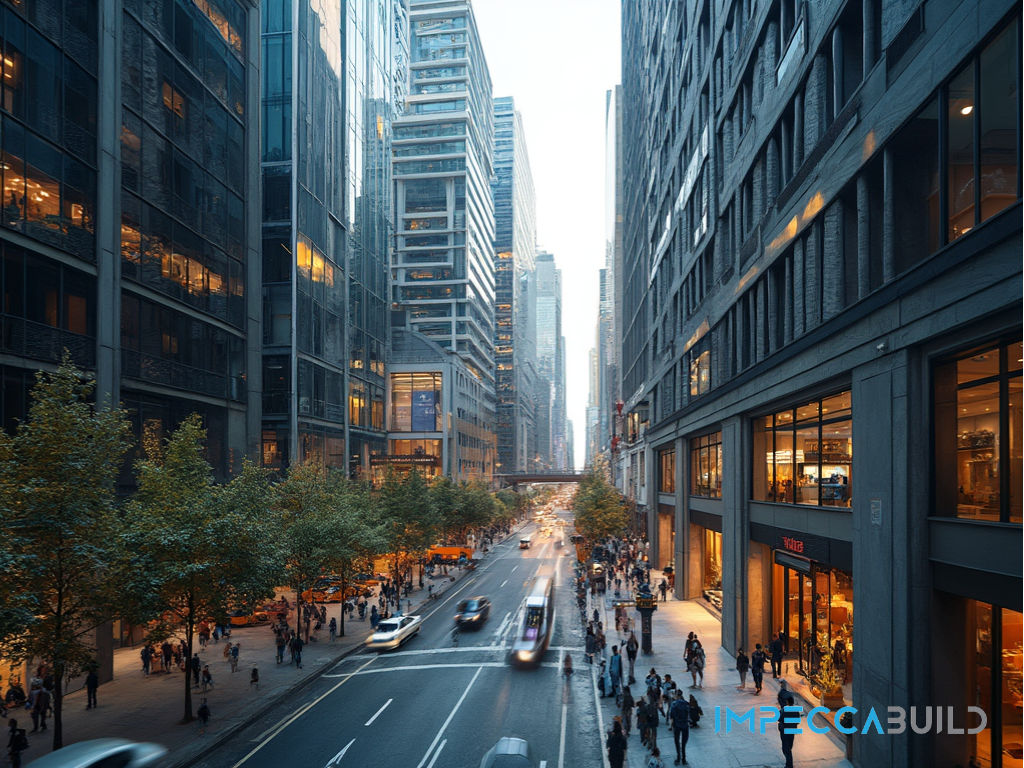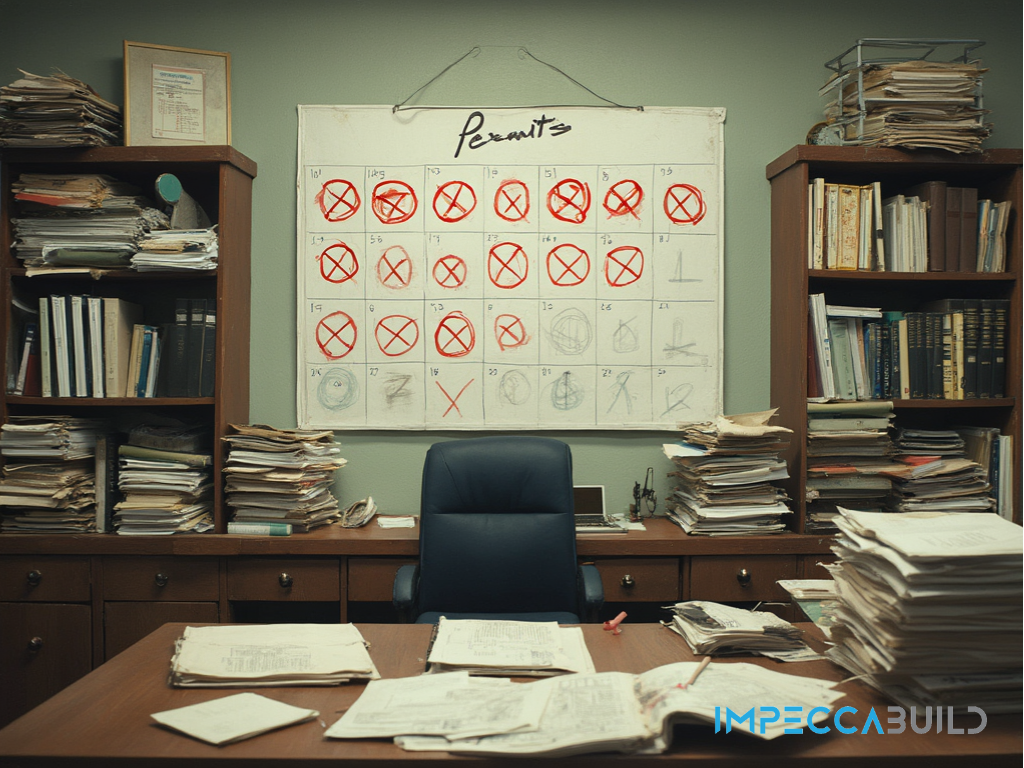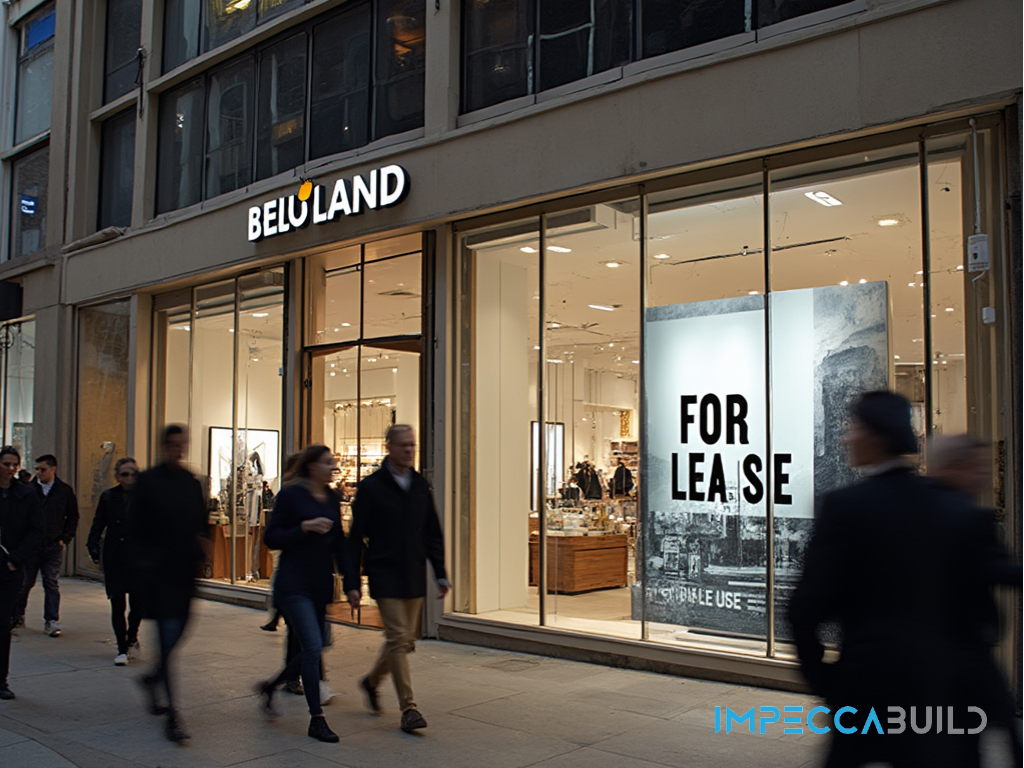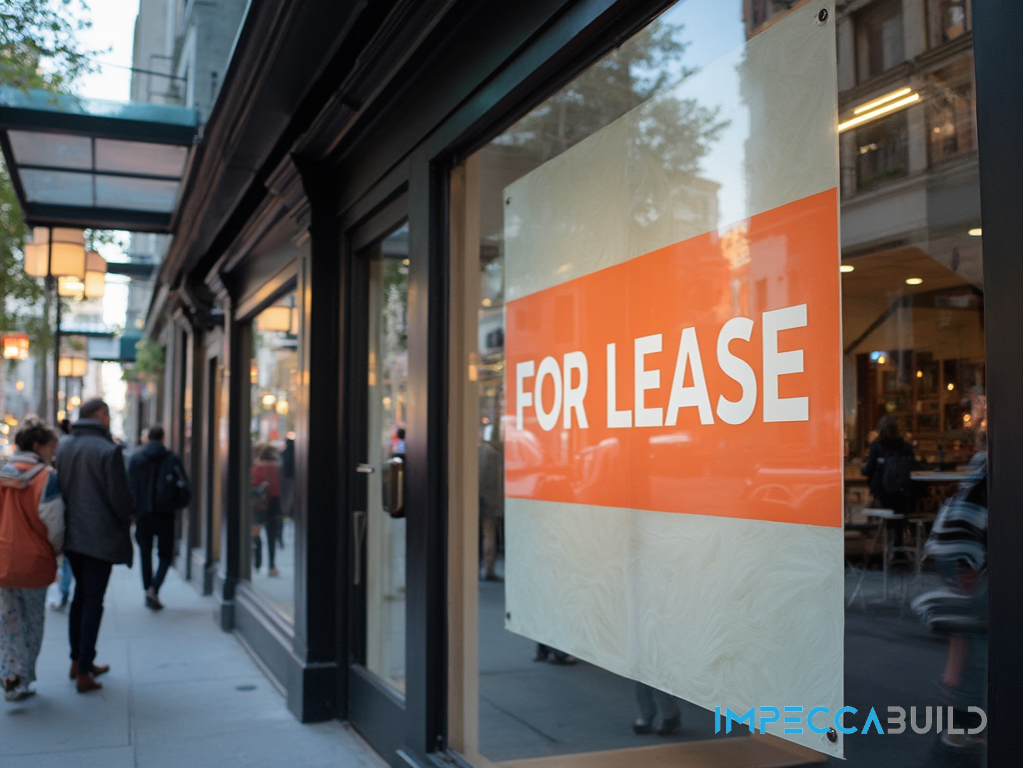When planning a pharmacy fit-out, one of the most overlooked yet crucial factors affecting your budget is location. Whether you’re setting up in a bustling city like Sydney or in a quieter rural area, the location impact on pharmacy fit-out costs can be substantial. The location of your pharmacy dictates everything from labour availability and material supply to compliance regulations and property accessibility—each of which can either skyrocket or significantly reduce your fit-out expenses.
In urban centres like Sydney, you’ll face unique challenges, such as higher competition among contractors and stricter regulatory demands. Meanwhile, in rural areas, the lack of nearby skilled tradespeople and material suppliers can lead to costly delays. By understanding how your location influences these costs, you can better prepare for potential obstacles and avoid common pitfalls that drain your budget.
This blog explores six shocking truths about how location affects pharmacy fit-out costs, offering insights to help you plan effectively and save money on your next project. Whether you’re opening a new pharmacy or renovating an existing one, knowing how to manage location-based expenses can make all the difference.
Tip/Idea/Tagline #2 (Change As Required)
Location Impact on Pharmacy Fit-Out Costs: Urban vs. Rural Considerations

When it comes to pharmacy fit-outs, the location of your business has a direct impact on your overall costs. Urban centres like Sydney and rural areas each present their own unique challenges that can influence expenses, from labour availability to material access.
Urban Pharmacy Fit-Out Costs
In urban areas, especially cities like Sydney, pharmacy owners often benefit from a larger pool of contractors and suppliers. This increased competition among tradespeople can sometimes help to keep labour costs in check, as businesses have more options to choose from. The availability of skilled professionals, combined with the close proximity to material suppliers, also tends to speed up the project timeline.
However, there are downsides to urban fit-outs. The demand for contractors in high-density areas can cause price surges, especially during busy periods. In Sydney, for example, regulatory requirements are often stricter, with local councils enforcing rigid building codes, fire safety regulations, and accessibility standards. Navigating these regulations can require additional planning, time, and sometimes even costly permits or modifications.
Additionally, space limitations in inner-city locations can pose logistical challenges. Restricted access to construction sites, lack of parking, and delivery constraints can slow down the process and add to labour costs, as tradespeople may need to work around these difficulties.
Rural Pharmacy Fit-Out Costs
In contrast, rural pharmacies often face a different set of cost drivers. The primary challenge is the availability of skilled labour. In less populated areas, there are fewer local tradespeople to choose from, which means you may need to bring in specialists from further afield. This results in additional expenses, such as travel costs, accommodation fees, and potentially even increased hourly rates due to the inconvenience for the tradespeople.
Material availability can also be a significant issue. While urban pharmacies in Sydney benefit from quick access to suppliers, rural locations may experience delays in receiving materials, increasing transportation costs and potentially leading to project hold-ups. Additionally, unforeseen issues such as infrastructure limitations or the need for custom materials can further inflate costs.
When it comes to regulatory environments, building codes, zoning laws, and compliance requirements may vary between urban and rural areas. However, it’s important to note that the level of stringency can differ depending on local regulations. Always check with your local council or a private certifying authority to ensure you’re meeting the specific requirements for your area. This helps avoid unexpected hurdles that could increase costs later in the process.
Comparison of Urban vs. Rural Cost Drivers
Ultimately, whether you’re in Sydney or a more rural setting, location will dictate certain unavoidable costs. Urban pharmacies may benefit from quicker timelines and more readily available resources, but they often face higher regulatory and logistical hurdles. In contrast, rural pharmacies may struggle with access to labour and materials, but they can sometimes avoid the intense challenges faced by urban pharmacies, depending on local circumstances.
Tip/Idea/Tagline #3 (Change As Required)
The Hidden Costs of Shopping Centers in Sydney and Beyond

Pharmacies located in shopping centres may benefit from high foot traffic and visibility, but these advantages come with hidden costs that can add up quickly. From additional permits to logistical hurdles, these expenses are often overlooked by first-time pharmacy owners. Understanding these hidden costs can help you budget more accurately and avoid unexpected surprises down the line.
Permits and Approvals in Shopping Centres
One of the most significant hidden costs for pharmacy fit-outs in shopping centres is the requirement for additional permits and approvals. Shopping centres often have their own set of rules and guidelines that go beyond standard building regulations, particularly in larger urban areas like Sydney. These rules can cover everything from store layout to signage, and navigating them can be both time-consuming and expensive. For example, retailers must follow specific design guidelines and work closely with centre management throughout the design process to ensure compliance. More details on managing these requirements can be found in QICRE’s design and fitout guidelines here.
In this process, a Retail Design Manager (RDM) plays a crucial role by working with your designer to ensure your pharmacy layout and design meet the centre’s specific guidelines. This collaboration can sometimes lead to revisions, adding to your design and approval timeline. Alongside them, the Tenancy Delivery Manager (TDM) oversees the practical aspects of the fit-out, ensuring your project adheres to all centre regulations and that the premises are ready for handover. Although their involvement ensures compliance and smooth execution, the detailed review process can extend timelines and increase overall costs.

Working-Hour Restrictions and Scheduling Limitations
Another hidden cost for pharmacies in shopping centres comes from restricted working hours. Most shopping centres limit construction work to non-trading hours to avoid disrupting customers and other businesses. While this may be essential for maintaining smooth day-to-day operations, it can create significant challenges for your fit-out project.
Tradespeople may only be able to work late at night or in the early morning, limiting the number of hours they can spend on-site each day. In Sydney, where shopping centres can have extended trading hours, the available time for construction work can be even more limited. This scheduling restriction not only slows down the project timeline but also leads to higher labour costs, as contractors may charge premiums for working outside of regular hours. Additionally, it’s crucial to understand who is responsible for paying these fit-out costs, as this can vary depending on the lease agreement. More information on cost responsibilities can be found on the NSW Small Business website here.
Moreover, coordinating different tradespeople to work during restricted hours adds complexity to project management. Delays in one area can have a ripple effect, causing further setbacks and increasing the total cost of the project.
Logistical Challenges in Shopping Centre Locations
Pharmacies located in shopping centres often face logistical hurdles that can lead to additional costs. For instance, access to the construction site is usually restricted, with limited space for deliveries and storage. This makes it more difficult to move materials and equipment into the site, leading to higher transportation and handling fees.
In some Sydney shopping centres, parking for tradespeople and delivery trucks may be limited or come at a premium, further increasing costs. Planning ahead for these challenges is essential to avoid unexpected budget overruns.
Tip/Idea/Tagline #4 (Change As Required)
How Property Size and Accessibility Affect Fit-Out Costs

When planning a pharmacy fit-out, the physical size of the property and its accessibility are two factors that can significantly influence your budget. While these may seem straightforward, they often hide complexities that can lead to unexpected cost increases.
Impact of Property Size on Fit-Out Costs
The size of your pharmacy directly affects the amount of materials, labour, and time required for the fit-out. Larger properties naturally demand more flooring, partitions, electrical work, and plumbing, all of which contribute to higher costs. Additionally, a bigger space often requires more specialised labour and longer project timelines, increasing overall expenses.
On the other hand, smaller properties may seem like a way to cut costs, but they come with their own set of challenges. In densely populated areas like Sydney, space limitations can create logistical issues, especially during construction. Small spaces often lack adequate storage for materials, forcing tradespeople to deliver supplies in smaller, more frequent shipments. This can increase transportation and labour costs as workers navigate the confined space, making it difficult to operate efficiently.

Accessibility and Its Influence on Costs
The ease of access to your property is another critical factor that can drive up fit-out costs. Properties in city centres, such as those in Sydney’s CBD, often present challenges related to restricted parking, limited loading zones, and tight delivery windows. These limitations can slow down the flow of materials and equipment, delaying the project and raising transportation costs.
Moreover, in urban locations, accessing the property may require special permits for parking or road closures, adding to the budget. Even in less congested areas, the distance from suppliers or the need for specialised equipment to reach elevated or remote properties can result in higher delivery fees and longer project timelines. Proper planning is essential to avoid these unexpected expenses.
Tip/Idea/Tagline #5 (Change As Required)
Regulatory and Compliance Factors in Location Impact on Pharmacy Fit-Out Costs

When planning a pharmacy fit-out, compliance with local regulations can significantly affect costs. Depending on your location, regulatory requirements may vary, influencing everything from the layout to the materials used. In densely populated cities like Sydney, strict building codes and zoning laws are in place to ensure safety and accessibility, and failing to meet these standards can lead to costly delays.
Building Codes and Zoning Laws
Local building codes often dictate the minimum requirements for safety, including fire prevention systems, accessibility features, and environmental considerations. Pharmacies in Sydney, for example, must comply with rigorous fire safety standards and ensure that their design includes accessible entrances and facilities for customers with disabilities. These added elements can increase construction costs but are essential to avoid penalties or rework later on.
Additionally, complying development offers a streamlined approval process for certain types of fit-out work, allowing businesses to bypass the longer development application route if they meet specific criteria. This fast-track process can reduce approval times from an average of 70 days to just 20 days, helping you save both time and money. Pharmacies looking to take advantage of this process should consult their local council or an accredited certifier. More details about complying development can be found on the NSW Planning Portal.

The Importance of Compliance for Pharmacy Fit-Outs
Pharmacies are subject to additional compliance requirements beyond standard building regulations, such as specific health and safety standards for storing medications and handling sensitive materials. Ensuring that all legal responsibilities are met, including obtaining the necessary construction permits and adhering to workplace health and safety regulations, is crucial for avoiding costly setbacks. Understanding Sydney’s commercial construction permit requirements will ensure a smooth fit-out process. Learn more about navigating the permit process here.
Tip/Idea/Tagline # (Change As Required)
The Influence of Material Availability and Delivery on Pharmacy Fit-Out Costs

When it comes to pharmacy fit-outs, the availability of materials and the logistics of delivery play a crucial role in determining overall costs. Depending on the location of your pharmacy, these factors can significantly impact your budget, as both urban and rural areas present unique challenges in terms of supply chain efficiency and transportation.
Material Supply Challenges in Different Locations
Material availability can vary dramatically based on your pharmacy’s location. Pharmacies in urban centres like Sydney often benefit from proximity to local suppliers and warehouses, which can reduce both costs and lead times. Having access to materials nearby not only accelerates the project timeline but also minimises the risk of price fluctuations due to long-haul transportation or global supply chain disruptions.
However, rural locations present a different scenario. Pharmacies in less populated areas may have to source materials from distant suppliers, leading to higher transportation costs and longer delays. For example, a pharmacy in a remote area may face a higher budget due to the need for specialised materials that are not readily available locally. The cost and time associated with sourcing these materials can slow down the project and increase the overall expenditure.
Global factors, such as material shortages or import delays, can also influence costs in both urban and rural locations. A shortage of construction materials like timber, steel, or glass can cause price hikes and extended lead times, further complicating the budget. Staying updated on material trends and working with experienced suppliers can help mitigate these risks.

The Impact of Delivery Logistics on Fit-Out Costs
The logistics of delivering materials to your pharmacy location can significantly affect your fit-out costs. For urban pharmacies in places like Sydney’s CBD, challenges such as limited access for delivery trucks, parking restrictions, and congestion can drive up transportation fees. In some cases, deliveries may require specialised equipment or permits to navigate narrow streets or restricted areas, further increasing costs.
In rural settings, while there may be fewer restrictions on delivery access, the long distances involved can add to transportation expenses. Moreover, if materials need to be sourced from outside the region, you may encounter delays due to fewer delivery options, leading to longer project timelines and higher labour costs as contractors wait for materials to arrive.
To avoid these logistical challenges, careful planning is essential. Working with local suppliers where possible, scheduling deliveries outside peak traffic hours in urban areas, or negotiating delivery costs in advance are all strategies that can help minimise expenses.
Tip/Idea/Tagline # (Change As Required)
How Sydney’s Property Market Dynamics Impact Pharmacy Fit-Out Costs

The dynamics of Sydney’s property market play a significant role in influencing the costs of pharmacy fit-outs. With high demand for prime locations, especially in areas like the Sydney CBD, property prices and lease conditions can significantly impact your overall budget.
Impact of High Rent and Lease Conditions on Fit-Out Costs
Sydney’s high property prices can place considerable financial pressure on pharmacy owners. In prime locations, rent can account for a substantial portion of operating costs, and the need to allocate more resources toward rent may leave less room in the budget for your fit-out. The more you pay for rent, the more crucial it is to manage other costs efficiently.
Lease conditions can also impact fit-out expenses. Some landlords may offer tenant improvement allowances to contribute toward fit-out costs, while others may place restrictions on alterations, adding unexpected expenses. Understanding these lease terms is essential, as it can either help reduce fit-out costs through contributions or increase them if the landlord requires specific design standards.

Demand for Prime Locations and Its Effect on Fit-Out Costs
Competition for prime locations, particularly in high-traffic areas, often results in increased rental rates. Pharmacies in busy locations such as shopping centres or major streets in Sydney may benefit from increased foot traffic, but this demand often drives up both rent and fit-out costs. Premium locations might come with stricter design guidelines imposed by landlords or local councils, further increasing construction expenses. In such areas, you may also need to invest more in high-quality finishes and custom designs to meet location standards, which can push your fit-out budget higher than expected.
Navigating Sydney’s competitive property market requires a strategic approach, balancing the benefits of a prime location with the potential for higher costs.
Tip/Idea/Tagline # (Change As Required)
Managing the Location Impact on Pharmacy Fit-Out Costs

Understanding the location-based factors that influence pharmacy fit-out costs is crucial for effective budgeting and planning. Whether you’re setting up in Sydney’s competitive urban market or a rural area with logistical challenges, recognising how elements like local regulations, material availability, property market dynamics, and delivery logistics affect your bottom line is essential.
By carefully navigating the complexities of local compliance requirements, working with trusted suppliers, and selecting a location that balances foot traffic with fit-out expenses, you can mitigate many of the unforeseen costs that often arise during the fit-out process. At ImpeccaBuild, we pride ourselves on offering expert advice and solutions to ensure your pharmacy fit-out is cost-effective, compliant, and tailored to your specific needs.
If you’re ready to start your pharmacy fit-out journey, don’t hesitate to consult with us for personalised advice. Visit ImpeccaBuild’s Pharmacy Fit-Out Experts to learn how we can help you transform your pharmacy with minimal stress and maximum value.
FAQs About the Location Impact on Pharmacy Fit-Out Costs
Frequently Asked Questions
How does location affect pharmacy fit-out costs?
Location impacts pharmacy fit-out costs in several ways, including property market dynamics, regulatory requirements, accessibility, and material availability. Urban areas like Sydney may have higher rental costs and stricter regulations, while rural areas could face higher transportation expenses and delays.
What are the hidden costs of a pharmacy fit-out in shopping centres?
Hidden costs in shopping centre fit-outs often include additional permits and approvals, restricted working hours, and logistical challenges like limited delivery access. These factors can delay the project and increase labour costs.
How does property size influence pharmacy fit-out costs?
Larger properties require more materials and labour, increasing costs. However, smaller properties may present logistical challenges that can also drive up expenses due to space limitations for storage and construction.
What role do building codes and zoning laws play in pharmacy fit-outs?
Building codes and zoning laws determine the safety, accessibility, and design standards that must be met during a pharmacy fit-out. Stricter regulations, like those in Sydney, can increase costs by requiring additional compliance measures such as fire safety systems and accessible facilities.
How does material availability impact pharmacy fit-out costs?
Material availability can significantly affect costs. Pharmacies in urban areas like Sydney benefit from proximity to suppliers, reducing transportation expenses. In rural areas, material delays and higher shipping costs can drive up the budget.
How do lease conditions impact pharmacy fit-out costs in Sydney?
Lease conditions in Sydney’s high-demand areas can influence fit-out costs. Some landlords may offer tenant improvement allowances, but others might impose stricter design standards or limited alterations, increasing expenses.
What are the key factors that affect pharmacy fit-out costs in Sydney’s CBD?
Key factors include high rental prices, strict compliance with local regulations, delivery logistics, and increased demand for prime locations, all of which can drive up both rental and fit-out costs.
How can pharmacy owners reduce fit-out costs in high-demand locations like Sydney?
Pharmacy owners can reduce costs by negotiating favourable lease terms, working with local suppliers to avoid high transportation fees, and planning for compliance with local regulations to avoid costly delays.
You Might Also like:
If you enjoyed reading this blog, you may also be interested in:
- 6 Hidden Risks Of Buying Without A Pre-Purchase Inspection
- Pre-Purchase Building Inspection Cost Sydney: 6 Ways To Save
- Residential Pre-Purchase Inspections: 10 Powerful Benefits
- Local Cafe Fitout Expert Sydney: 6 Smart Reasons to Choose Local
- Choosing a Cafe Fitout Company Sydney: 5 Expert Tips for Success
- Cafe Fitout Costs Sydney 2024: Simple Tips for Maximum Savings
- Location Impact on Pharmacy Fit-Out Costs: 6 Shocking Truths
- Pharmacy Location Rules for New Pharmacies: 8 Approval Insights
- Reducing Pharmacy Fit-Out Costs: 5 Powerful Ways to Save Big
- 7 Critical Questions to Ask a Pharmacy Fit-Out Company Before Hiring
